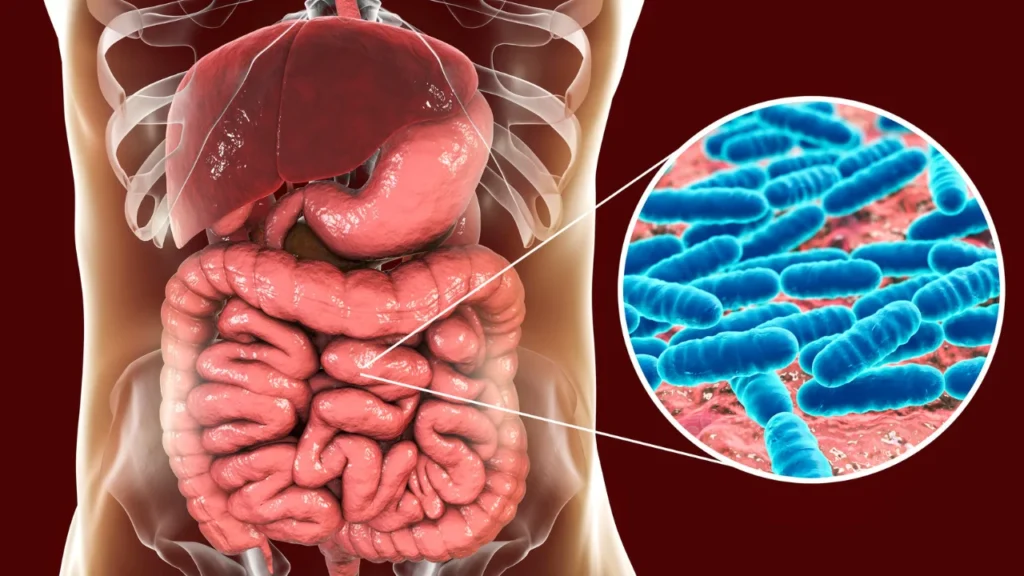The human digestive system is a complex network of organs and glands that work together to break down food, absorb nutrients, and eliminate waste. The main parts of the digestive system include the mouth, esophagus, stomach, small intestine, large intestine, and rectum. Each of these organs plays a specific role in the process of digestion.
The mouth, also known as the oral cavity, is where the process of digestion begins. The teeth in the mouth chew and grind food into smaller pieces, which are then mixed with saliva. Saliva contains enzymes that begin to break down carbohydrates in the food. The tongue also plays a role in mixing food with saliva and pushing it towards the back of the mouth, where it can be swallowed.
The esophagus is the tube that connects the mouth to the stomach. It uses muscular contractions, known as peristalsis, to push food down towards the stomach. The lower esophageal sphincter, a ring of muscle at the bottom of the esophagus, prevents stomach contents from flowing back into the esophagus.
The stomach is a muscular sac that mixes and grinds food with stomach acid and enzymes. The acid and enzymes break down food further, making it easier for the small intestine to absorb nutrients. The stomach also releases a hormone called gastrin, which stimulates the production of stomach acid.
The small intestine is a long, narrow tube that is responsible for most of the absorption of nutrients from food. The walls of the small intestine are lined with millions of tiny finger-like projections called villi and microvilli, which increase the surface area for absorption. The small intestine also secretes enzymes and bicarbonate to help break down food further.
The large intestine, also known as the colon, is responsible for absorbing water and electrolytes from food waste. The waste then moves into the rectum, where it is stored until eliminated through the anus.
The appendix, a small pouch attached to the large intestine, is thought to have a role in the immune system.
In summary, the human digestive system is a complex network of organs and glands that work together to break down food, absorb nutrients, and eliminate waste. The main parts of the digestive system include the mouth, esophagus, stomach, small intestine, large intestine and rectum, each playing a specific role in the process of digestion. Digestive system is very complex system of human body this is very unique and efficient from birth to death.
Human Digestive System Carnivore or Herbivore

The human digestive system is unique in that it is capable of processing both plant-based and animal-based foods. However, the human body is not specifically adapted to be a strict carnivore or herbivore.
The digestive system of a carnivore is designed to efficiently break down and digest animal protein and fat. Carnivores have a shorter and more acidic digestive tract, which allows for the rapid breakdown of meat and the absorption of nutrients. They also have sharp, pointed teeth and strong jaws for biting and chewing meat.
On the other hand, the digestive system of a herbivore is designed to efficiently break down and digest plant-based foods. Herbivores have a longer and less acidic digestive tract, which allows for the breakdown of tough plant fibers. They also have flat, molar-like teeth for grinding and chewing plants.
Humans, however, have a more complex digestive system that allows us to process a wide variety of foods. We have both incisors for biting and molars for grinding, as well as a longer and less acidic digestive tract. Our ability to consume and digest both plant and animal-based foods is thought to have played a key role in the development of human civilization.
In conclusion, humans are not strictly carnivores or herbivores, but rather have a digestive system that is adapted to process a wide variety of foods. This flexibility has allowed us to thrive in a variety of different environments and has played a crucial role in our evolution as a species.
Similarities Between Frog and Human Digestive System

Frogs and humans are both vertebrates, which mean they have a backbone and a nervous system that runs through the spinal cord. This similarity is also reflected in their digestive systems, which have many similarities despite the fact that frogs and humans have very different lifestyles and diets.
One similarity is that both frogs and humans have a mouth, esophagus, stomach, and intestines. Food enters the mouth, where it is broken down by enzymes and mechanical action before moving on to the esophagus, stomach, and intestines. Both frogs and humans also have a liver and pancreas that produce enzymes to aid in digestion and a large intestine that absorbs water and electrolytes.
Another similarity is that both frogs and humans have a muscular diaphragm that helps to move food through the digestive tract. In both frogs and humans, the diaphragm contracts and relaxes to push food through the esophagus and into the stomach.
Read More: Human Cardiovascular System
Another similarity is the presence of gut flora, which are microorganisms that live in the gut and help to break down food. In both frogs and humans, gut flora play an important role in the digestion of food and the absorption of nutrients.
However, there are also some notable differences between the digestive systems of frogs and humans. For example, frogs have a longer small intestine than humans, which allows them to better absorb nutrients from their diet. Additionally, frogs have a spiral valve in their small intestine which increases the surface area for nutrient absorption. Humans don’t have this feature.
In terms of diet, frogs are carnivores and eat mainly insects, worms and other small animals, while humans are omnivores and eat a wide variety of foods. This difference in diet is reflected in the differences in the shape and size of the stomach and intestines, as well as the enzymes produced by the liver and pancreas.
Human Digestive System Diagram

The Human Digestive System: A Guide to Its Anatomy and Function
The human digestive system is a complex network of organs and tissues that work together to break down food, absorb nutrients, and eliminate waste. Digestion begins at the mouth and ends at the rectum, and is made up of several major components, including the mouth, esophagus, stomach, small intestine, large intestine, and rectum. Understanding the anatomy and function of each part of the digestive system can shed light on how it works and why it is important to overall health and well-being.
Mouth: The mouth is the first part of the digestive system and is responsible for mechanically breaking down food through chewing and grinding. Teeth, tongue and salivary glands play an important role in this process. Saliva contains an enzyme called amylase that starts the process of breaking down carbohydrates.
Esophagus: The esophagus is a muscular tube that connects the mouth to the stomach. It uses muscle contractions called peristalsis to move food from the mouth to the stomach.
Stomach: The stomach is a muscular pouch that mixes food with digestive juices and grinds it. The stomach is capable of producing strong acids and digestive enzymes that break down proteins, carbohydrates, and fats. The partially digested food then moves into the small intestine.
Small Intestine: The small intestine is a long, narrow tube that is responsible for the absorption of most nutrients. The walls of the small intestine are lined with finger-like projections called villi that help increase the surface area for nutrient absorption. The small intestine also receives digestive juices from the liver and pancreas to help break down food.
Colon: The colon is a wide tube responsible for removing water and electrolytes from undigested food. The large intestine also contains a large population of intestinal bacteria that aid in digestion and produce important vitamins. Waste material accumulates in the rectum until it is expelled through the anus.
Rectum and anus: The rectum and anus are the final parts of the digestive system. The rectum stores waste material until it is passed out through the anus. The anus has muscles called sphincters that control the passage of waste.
Finally, the human digestive system is a complex and intricate network of organs and tissues that work together to break down food, absorb nutrients, and eliminate waste. Understanding the anatomy and function of each part of the digestive system can shed light on how it works and why it is important to overall health and well-being.
Human Digestive System Labelled

The Human Digestive System: A Label Review
The human digestive system is a complex system of organs and tissues that work together to break down food, extract essential nutrients, and eliminate waste. Below is a labeled overview of the human digestive system.
Mouth: The mouth is where the digestion process begins. Food is chewed and mixed with saliva, which contains an enzyme called amylase that breaks down carbohydrates.
Esophagus: The esophagus is a muscular tube that connects the mouth to the stomach. Food moves from the mouth to the stomach through rhythmic contractions of the esophagus called peristalsis.
Stomach: The stomach is a fleshy sac that mixes food with stomach acid and digestive enzymes. This process, called gastric churning, breaks down food into a thick liquid called chyme.
Small intestine: The small intestine is a long, narrow tube where most of the nutrients from food are absorbed into the bloodstream. The walls of the small intestine are lined with tiny finger-like projections called villi, which increase the surface area for absorption.
Liver: The liver produces bile, a digestive juice that helps break down fats in the small intestine. Bile is stored in the gallbladder and released into the small intestine as needed.
Pancreas: The pancreas produces digestive enzymes that help break down carbohydrates, proteins, and fats in the small intestine. It also releases insulin, a hormone that regulates blood sugar levels.
Colon: Colon is a wide tube that absorbs water and electrolytes from the rest of the digested food. As a result, waste products accumulate in the mill and are passed out of the body through the rectum and anus.
In conclusion, the human digestive system is a complex and efficient system of organs and tissues that work together to extract essential nutrients from food and eliminate waste. Understanding the different parts and their functions is important for maintaining a healthy digestive system.
Label Human Digestive System

Here is a labeled diagram of the human digestive system:
- Mouth
- Teeth
- Tongue
- Salivary glands
- Esophagus
- Stomach
- Liver
- Pancreas
- Small intestine
- Villi
- Large intestine
- Gut bacteria
- Rectum
- Anus
Overall, while there are many similarities between the digestive systems of frogs and humans, there are also important differences that reflect the different lifestyles and diets of these two species.






